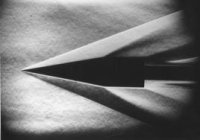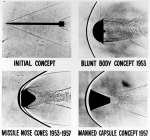You are using an out of date browser. It may not display this or other websites correctly.
You should upgrade or use an alternative browser.
You should upgrade or use an alternative browser.
Rain -- Does it affect POI?
- Thread starter Syncrowave
- Start date
Area Man said:And airplane pilots know that an increase in humidity equals a decrease in the air density.
Humid air weighs more, per gallon, than dry air, all other things being equal, so increasing humidity increases density.
Syncrowave said:Area Man said:And airplane pilots know that an increase in humidity equals a decrease in the air density.
Humid air weighs more, per gallon, than dry air, all other things being equal, so increasing humidity increases density.
A lot of pilots would be disturbed to know that they have been misinformed for so long. Here is one of many explanations the google provided.
http://whyfiles.org/2010/the-weather-guys-heavy-air/
CatShooter
Syncrowave said:Area Man said:And airplane pilots know that an increase in humidity equals a decrease in the air density.
Humid air weighs more, per gallon, than dry air, all other things being equal, so increasing humidity increases density.

This is soooo not true, that it has ruined my breakfast!!!
Area Man said:Syncrowave said:Area Man said:And airplane pilots know that an increase in humidity equals a decrease in the air density.
Humid air weighs more, per gallon, than dry air, all other things being equal, so increasing humidity increases density.
A lot of pilots would be disturbed to know that they have been misinformed for so long. Here is one of many explanations the google provided.
http://whyfiles.org/2010/the-weather-guys-heavy-air/
I'll be darned ... I stand corrected!

http://www.engineeringtoolbox.com/density-air-d_680.html
I guess what threw me is that I know humid air has a higher Specific Heat than dry air...and I assumed that this was because humid air was heavier, per mole, than dry air. But the reason humid air has a higher Specific Heat than dry air isn't because it's denser, but because of the uniquely-high Specific Heat of H2O.
You know what they say about "a little knowledge" ... it can be dangerous!
There is something odd with those schlierens; the nose of the projectiles seems to be out of focus or the plane of the schlieren is taken at an angle. I have taken some images from the internet of other schlierens. Physically the shock cannot be 'behind' the nose of the body since the shock communicates the projectile's presence to the onset flowCatShooter said:steve_podleski said:CatShooter said:The shock wave is NEVER in front of the bullet - it spreads out and back from the nose (and other physical changes) at an angle which is related to the speed - when the bullet speed is below the speed of sound, there is no shock wave.
A normal shock (normal meaning perpendicular to the flow) is in front of the projectile/aircraft. With a sharp-nose object, the extent of the normal shock will be small relative to the oblique shock (see DMoran schlieren pic of shocks around a bullet).
I have taken thousands of Schlieren photos and shadow graphs at Columbia University, documenting small particles of coal at high velocity in methane and helium.... and I design systems to take these photos.
The shock wave never gets in front of the bullet, except when the bullet just slips below the speed of sound.
The wave is generated on contact with the tip, and every irregular surface on the projectile.
At the speed that bullets move when making shock waves, drops of water cannot get out of the way.
Attachments
CatShooter
Schlieren waves are formed AT the nose - they can sometimes seem out of focus because of optical artifacts.
Similar threads
- Replies
- 151
- Views
- 10,618
- Replies
- 10
- Views
- 2,221
Upgrades & Donations
This Forum's expenses are primarily paid by member contributions. You can upgrade your Forum membership in seconds. Gold and Silver members get unlimited FREE classifieds for one year. Gold members can upload custom avatars.

Click Upgrade Membership Button ABOVE to get Gold or Silver Status.
You can also donate any amount, large or small, with the button below. Include your Forum Name in the PayPal Notes field.
To DONATE by CHECK, or make a recurring donation, CLICK HERE to learn how.

Click Upgrade Membership Button ABOVE to get Gold or Silver Status.
You can also donate any amount, large or small, with the button below. Include your Forum Name in the PayPal Notes field.
To DONATE by CHECK, or make a recurring donation, CLICK HERE to learn how.













